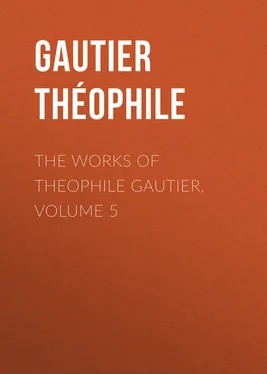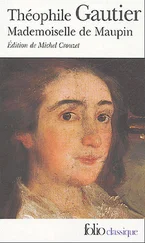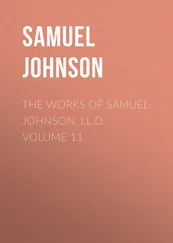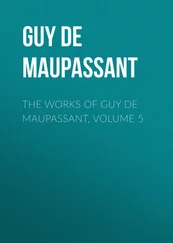Théophile Gautier - The Works of Theophile Gautier, Volume 5
Здесь есть возможность читать онлайн «Théophile Gautier - The Works of Theophile Gautier, Volume 5» — ознакомительный отрывок электронной книги совершенно бесплатно, а после прочтения отрывка купить полную версию. В некоторых случаях можно слушать аудио, скачать через торрент в формате fb2 и присутствует краткое содержание. Жанр: foreign_antique, foreign_prose, на английском языке. Описание произведения, (предисловие) а так же отзывы посетителей доступны на портале библиотеки ЛибКат.
- Название:The Works of Theophile Gautier, Volume 5
- Автор:
- Жанр:
- Год:неизвестен
- ISBN:нет данных
- Рейтинг книги:3 / 5. Голосов: 1
-
Избранное:Добавить в избранное
- Отзывы:
-
Ваша оценка:
- 60
- 1
- 2
- 3
- 4
- 5
The Works of Theophile Gautier, Volume 5: краткое содержание, описание и аннотация
Предлагаем к чтению аннотацию, описание, краткое содержание или предисловие (зависит от того, что написал сам автор книги «The Works of Theophile Gautier, Volume 5»). Если вы не нашли необходимую информацию о книге — напишите в комментариях, мы постараемся отыскать её.
The Works of Theophile Gautier, Volume 5 — читать онлайн ознакомительный отрывок
Ниже представлен текст книги, разбитый по страницам. Система сохранения места последней прочитанной страницы, позволяет с удобством читать онлайн бесплатно книгу «The Works of Theophile Gautier, Volume 5», без необходимости каждый раз заново искать на чём Вы остановились. Поставьте закладку, и сможете в любой момент перейти на страницу, на которой закончили чтение.
Интервал:
Закладка:
It was a sort of portico squarely cut in the living rock. On the two side-walls a couple of pairs of pillars exhibited capitals formed of bulls' heads, the horns of which were twisted like the crescent of Isis. Below the low door, with its jambs flanked by long panels covered with hieroglyphs, there was a broad, emblematic square. In the centre of a yellow disc showed by the side of the scarabæus, symbol of successive new births, the ram-headed god, the symbol of the setting sun. Outside the disc, Isis and Nephthys, incarnations of the Beginning and the End, were kneeling, one leg bent under the thigh, the other raised to the height of the elbow, in the Egyptian attitude, the arms stretched forward with an air of mysterious amazement, and the body clothed in a close fitting gown girdled by a belt with falling ends. Behind a wall of stone and unbaked brick, that readily yielded to the pickaxes of the workmen, was discovered the stone slab which formed the doorway of the subterranean monument. On the clay seal which closed it, the German doctor, thoroughly familiar with hieroglyphs, had no difficulty in reading the motto of the guardian of the funeral dwellings, who had closed forever this tomb, the situation of which he alone could have found upon the map of burial-places preserved in the priests' college.
"I begin to believe," said the delighted scholar to the young nobleman, "that we have actually found a prize, and I withdraw the unfavourable opinion which I expressed about this worthy Greek."
"Perhaps we are rejoicing too soon," answered Lord Evandale, "and we may experience the same disappointment as Belzoni, when he believed himself to be the first to enter the tomb of Menephtha Seti, and found, after he had traversed a labyrinth of passages, walls, and chambers, an empty sarcophagus with a broken cover; for the treasure-seekers had reached the royal tomb through one of their soundings driven in at another point in the mountain."
"Oh, no," answered the doctor; "the range is too broad here and the hypogeum too distant from the others for these wretched people to have carried their mines as far as this, even if they scraped away the rock."
While this conversation was going on, the workmen, urged by Argyropoulos, proceeded to lift the great stone slab which filled up the orifice of the passage. As they cleared away the slab in order to pass their crow-bars under it, for Lord Evandale had ordered that nothing should be broken, they turned up in the sand innumerable small statuettes a few inches in height, of blue and green enamelled ware, of admirable workmanship, – tiny funeral statuettes deposited there as offerings by parents and friends, just as we place flowers on the thresholds of our funeral chapels; only, our flowers wither, while after more than three thousand years these witnesses of long bygone griefs are found intact, for Egypt worked for eternity only.
When the door was lifted away, giving for the first time in thirty-five centuries entrance to the light of day, a puff of hot air escaped from the sombre opening as from the mouth of a furnace. The light, striking the entrance of the funeral passage, brought out brilliantly the colouring of the hieroglyphs engraved upon the walls in perpendicular lines upon a blue plinth. A reddish figure with a hawk's-head crowned with the pschent , the double crown of Upper and Lower Egypt, bore a disc containing a winged globe, and seemed to watch on the threshold of the tomb. Some fellahs lighted torches and preceded the two travellers, who were accompanied by Argyropoulos. The resinous flame burned with difficulty in the dense, stifling air which had been concentrated for so many thousands of years under the heated limestone of the mountain, in the labyrinths, passages, and blind ways of the hypogeum. Rumphius breathed hard and perspired in streams; the impassible Evandale turned hot and felt a moisture on his temples. As for the Greek, the fiery wind of the desert had long since dried him up, and he perspired no more than would a mummy.
The passage led directly to the centre of the chain, following a vein of limestone of remarkable fineness and purity. At the end of the passageway a stone door, sealed as the other had been with a clay seal and surmounted by a winged globe, proved that the tomb had not been violated and pointed to the existence of another passageway sunk deeper still into the mountain.
The heat was now so intense that the young nobleman threw off his white coat, and the doctor his black one. These were soon followed by their vests and shirts. Argyropoulos, seeing that they were breathing with difficulty, whispered a few words to a fellah, who ran back to the entrance and brought two large sponges filled with fresh water, which the Greek advised the two travellers to place on their mouths so that they might breathe a fresher air through the humid pores, as is done in Russian baths when the steam heat is raised to excess.
The door was attacked and soon gave way. A steep staircase cut in the living rock was then seen descending. Against a green background edged with a blue line were ranged on either side of the passageway processions of symbolical statues, the colours of which were as bright and fresh as if the artist's brush had laid them on the day before. They would show for a second in the light of the torches, then vanish in the shadow like the phantoms of a dream. Below these narrow frescoes, lines of hieroglyphs, written perpendicularly like Chinese writing and separated by hollow lines, excited the erudite by the sacred mystery of their outlines. Along that portion of the walls which was not covered with hieratic signs, a jackal lying on its belly, with outstretched paws and pointed ears, and a kneeling figure wearing a mitre, its hand stretched upon a circle, seemed to stand as sentries on either side of the door, the lintel of which was ornamented with two panels placed side by side, in which were figured two women wearing close-fitting gowns and extending their feathered arms like wings.
"Look here!" said the doctor, taking breath when he reached the foot of the staircase, and when he saw that the excavation sank deeper and deeper still. "Are we going down to the centre of the earth? The heat is increasing to such a degree that we cannot be far from the sojourn of the damned."
"No doubt," answered Lord Evandale, "they followed the vein of limestone, which sinks in accordance with the law of geological undulations."
Another very steep passage came after the steps. The walls were lower, covered with paintings, in which could be made out a series of allegorical scenes, explained, no doubt, by the hieroglyphs inscribed below. This frieze ran all along the passage, and below it were small figures worshipping sacred scarabæi and the azure-coloured symbolical serpent.
As he reached the end of the passage, the fellah who carried the torch threw himself back abruptly, for the path was suddenly interrupted by the mouth of a square well yawning black at the surface of the ground.
"There is a well, master," said the fellah, addressing himself to Argyropoulos; "what am I to do?"
The Greek took the torch, shook it to make it blaze up, and threw it into the small mouth of the well, bending cautiously over the opening. The torch fell, twisting and hissing. Soon a dull sound was heard, followed by a burst of sparks and a cloud of smoke, then the flame burned up bright and clear, and the opening of the well shone in the shadow like the bloodshot eye of a Cyclops.
"Most ingenious!" said the young nobleman. "This labyrinth, interrupted by oubliettes, must have cooled the zeal of robbers and scholars."
"Not at all," replied the doctor. "Those seek gold, these truth, which are the two most precious things in the world."
"Bring the knotted rope!" cried Argyropoulos to his Arabs. "We shall explore and sound the walls of the well, for the passage no doubt runs far beyond it."
Читать дальшеИнтервал:
Закладка:
Похожие книги на «The Works of Theophile Gautier, Volume 5»
Представляем Вашему вниманию похожие книги на «The Works of Theophile Gautier, Volume 5» списком для выбора. Мы отобрали схожую по названию и смыслу литературу в надежде предоставить читателям больше вариантов отыскать новые, интересные, ещё непрочитанные произведения.
Обсуждение, отзывы о книге «The Works of Theophile Gautier, Volume 5» и просто собственные мнения читателей. Оставьте ваши комментарии, напишите, что Вы думаете о произведении, его смысле или главных героях. Укажите что конкретно понравилось, а что нет, и почему Вы так считаете.












